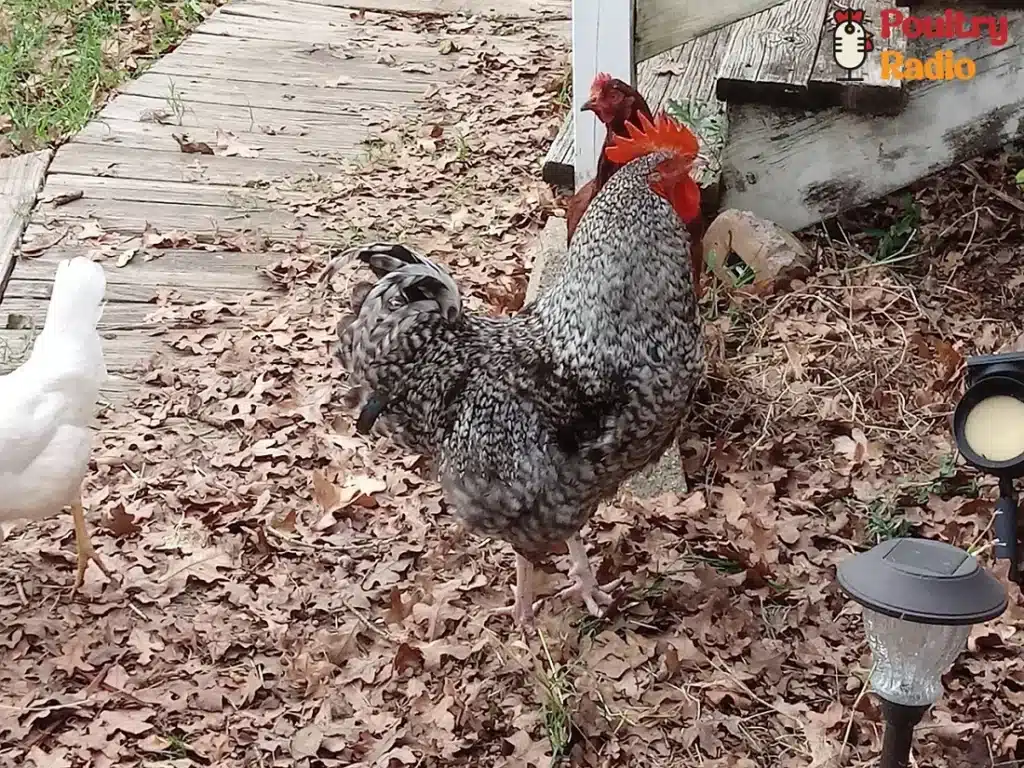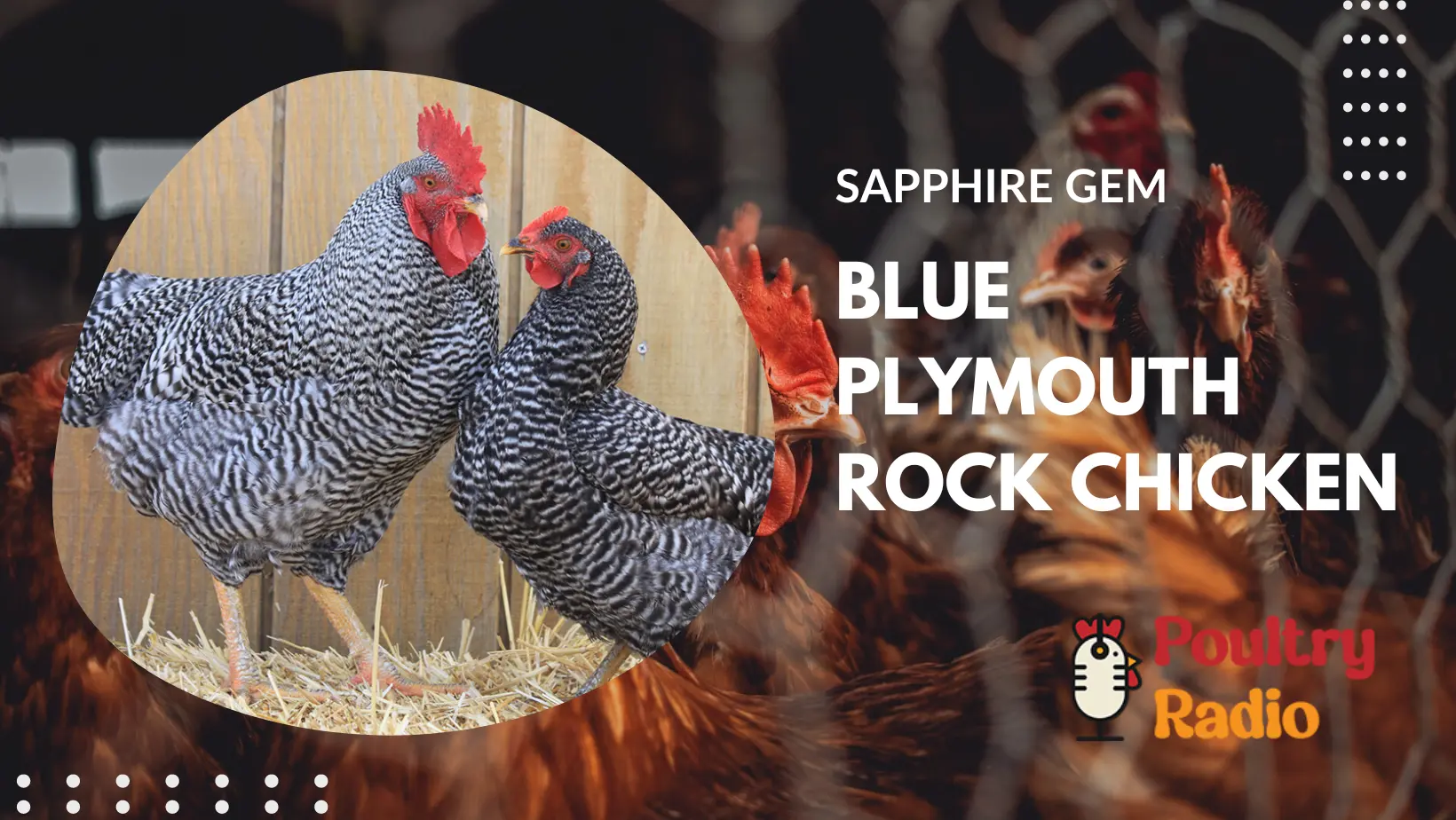All About the Blue Plymouth Rock Chicken Breed: Unveiling the Sapphire Gem
Introducing the new favorite designer chicken in the poultry world, the Blue Plymouth Rock Chicken.
Also referred to as the Sapphire Gem or Sapphire Blue Plymouth Rock, this relatively recent chicken breed has become increasingly popular due to their excellent egg-laying abilities, beautiful plumage, and friendly nature.
For those eager to learn more about the Blue Plymouth Rock, this article provides all the essential information about this special chicken breed.
Quick Facts about Blue Plymouth Rock Chicken
| Breed Name: | Sapphire Blue Plymouth Rock Chicken |
| Origin: | Czech Republic |
| Uses: | Mostly used for egg production |
| Color: | Feathers are lavender-blue shade with a delightful gold or grey pattern around the neck. |
| Life span: | 5-10 years |
| Climate resistance: | Resistant to both cold and warm weather conditions |
| Care: | Easy and good for beginners |
| Egg-Laying Capacity | 5-6 eggs per week, 290 eggs per year |
| Temperament: | Calm and docile, not noisy, and get along with other breeds |
| Rooster (Male) size: | 6 pounds |
| Hen (Female) size: | 5 pounds |
| Egg Size: | Large |
| Egg Color: | Light brown |
| Broody: | Mostly not broody |
| Price: | Male $3.5, Female $5 |
| Comb type: | Single comb |
Origins of Blue Plymouth Rock Chicken
The exact beginnings of the Blue Plymouth Rocks are uncertain, but chicken experts believe they originated in the Czech Republic.
The Sapphire Blue is considered a hybrid chicken, believed to be a combination of the Blue colored Plymouth Rock and Barred Plymouth Rock breeds.
Because this breed is relatively recent, it has not yet been officially recognized by the American Poultry Association (APA).
Appearance
Sapphire Blues are quite the attention-grabbers, not just for their impressive egg-laying skills, but also for the striking color of their feathers.
These chickens are sex-linked, which means you can distinguish between male and female chicks based on their plumage right after they hatch.

Both males and females of this breed have lovely lavender-blue feathers, with males sporting a white dot on their heads or wings.
As the female chicks grow, they develop a distinctive ring of gold or grey feathers around their necks.
In terms of size, both males and females are medium-sized, typically weighing in at 5-6 pounds.
Plymouth Rock Chicken Eggs Laying Ability
If you’re considering raising chickens for egg production, the Sapphire Blue could be an excellent option.
These hens typically lay around 290 large brown eggs per year, surpassing the average backyard hen, which lays about 250 eggs annually.
Although they are suitable for meat production due to their size, most farmers and chicken owners prefer not to use them for this purpose as their egg-laying capabilities are exceptional.
However, some people utilize Sapphire Blues for meat once they stop laying eggs, as they are of medium size.

Nevertheless, many individuals opt to keep retired Sapphire Blues as pets due to their amiable and gentle nature.
Temperament
Sapphire Blues or Blue Plymouth Rocks are not noisy chickens, making them a good choice for those with nearby neighbors.
However, they are an alert breed and will be vigilant if there are predators in the vicinity.
With their calm and friendly temperament, they make great pets and are well-suited for families with children.
They can be easily held and are affectionate, much like other domesticated animals.
Due to their amicable nature, Sapphire Blues can coexist harmlessly with other chickens, making them an ideal choice for beginners as they are easy to raise and manage.
Sapphire Blues are fantastic at finding their food and prefer having room to roam.
They are well-suited for free-ranging in any climate, as long as they can retreat to a coop in very cold months.
It’s recommended to provide a minimum of 4 square feet of space per chicken.
Health Issues
This chicken breed is also known for generally being quite healthy, which is another positive trait.
However, Sapphire Blues, like all chickens, can still be affected by lice and other parasites.
It’s important to keep an eye out for any signs of illness and seek veterinary treatment if necessary.
Sapphire Blues are pretty chill with the cold, but they have single combs. Check out these combs – they’re the fleshy thing on top of their head, usually reddish.
Because single-comb chickens can get frostbite, it’s best to make sure Sapphire Blues have a cozy spot to chill on colder nights.
Are Blue Plymouth Rocks Good for Small-Scale Farming?
Blue Plymouth Rock chickens are a perfect choice for small-scale farming.
Limited space and proximity to neighboring houses are common challenges for small farms.
Due to their quiet nature, self-sufficiency, and exceptional egg-laying abilities, Sapphire Blues prove to be a low-hassle and lucrative option for small-scale farmers.
Is The Plymouth Rock Chicken Right For You?
If you’re searching for a bird that’s perfect for a family environment, then the Blue Rock could be the right choice for you. They are renowned for their friendly nature towards both children and adults, often enjoying cuddles and attention, and may even become fond of sitting on laps!
Consider the Blue Plymouth Rock if you’re interested in raising chickens for egg production. It could be a fantastic choice!
They are super easy to get along with, low-maintenance, and a great option for people new to raising chickens.

Conclusion
The Blue Plymouth Rock chicken, also known as the Sapphire Gem, embodies a perfect blend of beauty, friendliness, and exceptional egg-laying abilities, making it an ideal choice for poultry enthusiasts of all levels.
From its origins in the Czech Republic to its striking lavender-blue feathers with gold or grey patterns, the Sapphire Blue is truly a showstopper.
Not only does it excel in egg production, providing approximately 290 large brown eggs per year, but it also boasts a calm and docile temperament, making it an excellent addition to family farms.
Whether you’re a novice or an experienced farmer, the Blue Plymouth Rock’s adaptability, resilience, and low-maintenance nature make it a valuable asset to any poultry endeavor, proving that it is a gem worth unveiling.
Looking for more beautiful types of chickens? Try our articles on:
Frequently Asked Questions
What color eggs do a blue Plymouth Rock lay?

Blue Plymouth Rock hens typically lay around 290 large brown eggs per year.
At what age do blue rocks lay eggs?
Blue Plymouth Rock hens begin to lay eggs at 18-20 weeks.
Do blue chickens lay blue eggs?
To ensure you get blue eggs, you’ll want to consider Ameraucana, Araucana, or Cream Legbar chickens.
Are blue eggs better?
Nope, there’s no distinction in terms of edibility, health, or nutrition in eggs with different-colored shells.
Do Blue Plymouth Rock chickens lay eggs in winter?
Another fantastic aspect of Blue Plymouth Rock chickens is their ability to lay consistently throughout the winter, unlike other birds whose egg production tends to decline in colder weather. This makes them a popular choice for backyard enthusiasts who rely on a steady supply of delicious eggs for their morning omelets!







